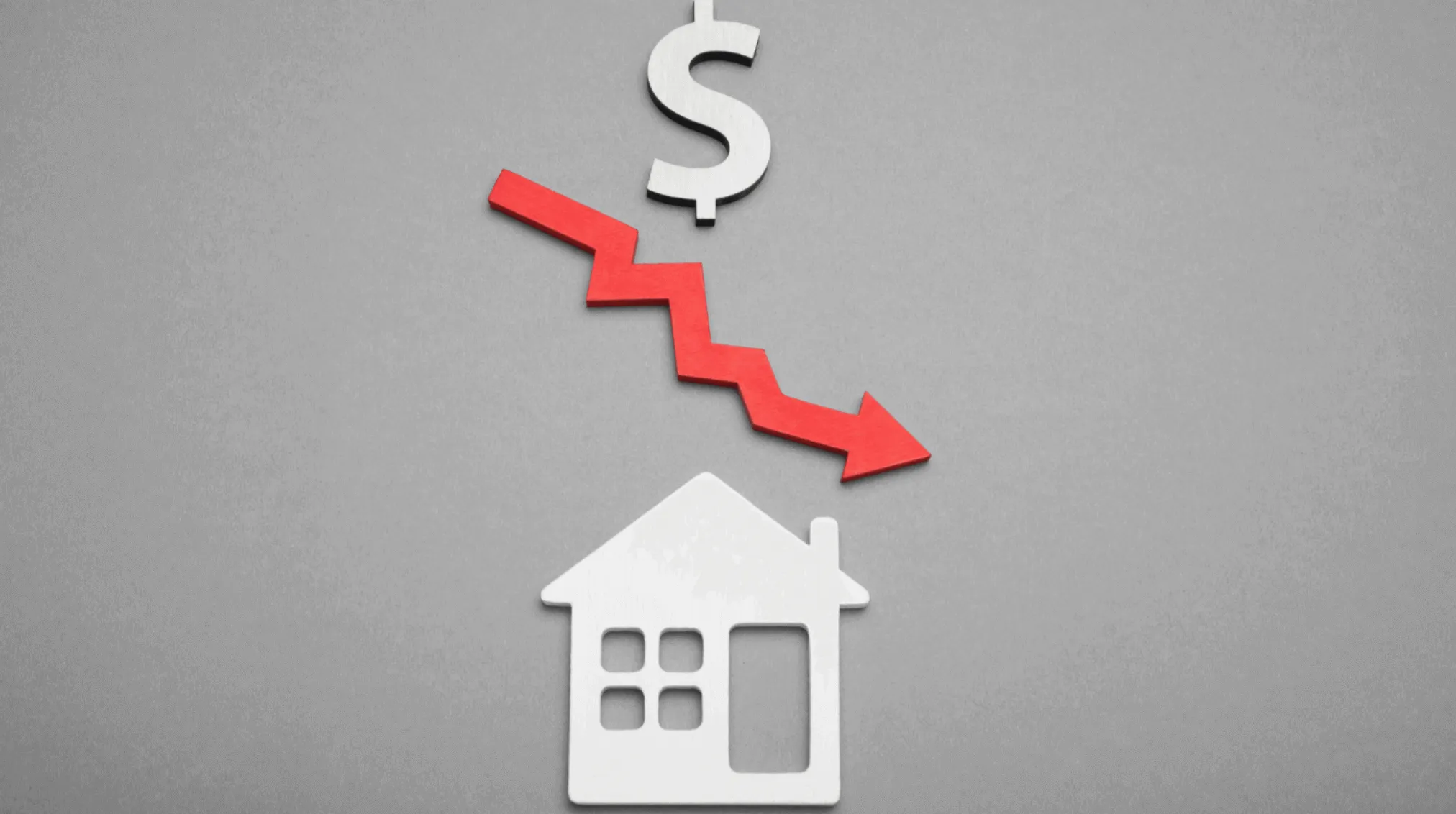Immobilien-Preisgestaltung: Leitfaden für faire Preise
Immobilien-Preisgestaltung bedeutet, den optimalen Preis für Ihre Immobilie festzulegen und ihren Wert zu maximieren. Wir zeigen Ihnen verschiedene Methoden der Immobilien-Preisgestaltung.
"Immobilienpreisgestaltung" bezieht sich auf den Prozess der Festlegung des angemessenen Preises für eine Immobilie, sei es Wohn-, Gewerbe- oder Industrieimmobilien. Dieser Prozess ist entscheidend, da ein gut festgelegter Preis den Erfolg oder Misserfolg einer Immobilientransaktion bestimmen kann. Einfach ausgedrückt besteht die Immobilienpreisgestaltung darin, das perfekte Gleichgewicht zwischen dem wahrgenommenen Wert des Käufers und dem wirtschaftlichen Ziel des Verkäufers zu finden.
Dieser Prozess besteht nicht einfach darin, eine willkürliche Zahl zu schätzen. Er erfordert eine detaillierte Analyse, die ein tiefes Verständnis des Marktes, der Nachfrage, des Angebots und der spezifischen Merkmale der Immobilie erfordert. Eine ordnungsgemäße Preisgestaltung stellt sicher, dass die Immobilie nicht nur Interesse weckt, sondern auch innerhalb eines angemessenen Zeitrahmens und zu einem fairen Preis verkauft wird.
Die Immobilienpreisgestaltung variiert auch je nach Art der Immobilie. Zum Beispiel unterscheidet sich der Prozess der Preisfestsetzung für Gewerbeimmobilien von dem für Wohnimmobilien, da jede Art von Immobilie unterschiedliche Kennzahlen und Faktoren hat, die ihren Wert beeinflussen. Im Fall von Gewerbeimmobilien könnte der Preis weitgehend von den Einnahmen abhängen, die die Immobilie generieren kann, während bei Wohnimmobilien Faktoren wie Lage, Größe und Zustand stärker im Vordergrund stehen.
Darüber hinaus ist die Immobilienpreisgestaltung eine Schlüsselstrategie nicht nur für den Verkauf, sondern auch für die Vermietung von Immobilien. Ein schlecht angepasster Mietpreis kann zu langen Leerstandszeiten oder der Notwendigkeit führen, den Preis nach mehreren Monaten auf dem Markt zu senken.
Bedeutung der Preisgestaltung im Immobilienmarkt
Die Preisgestaltung im Immobilienbereich ist entscheidend für die Aufrechterhaltung von Effizienz und Gleichgewicht im Immobilienmarkt. Ein Markt, in dem Immobilien schlecht bewertet sind, kann zu Immobilienblasen führen, die wiederum wirtschaftliche Krisen verursachen können. Andererseits können unterbewertete Preise zu erheblichen Verlusten für Eigentümer führen und den Markt destabilisieren.
Einer der Hauptgründe, warum die Preisgestaltung im Immobilienbereich so wichtig ist, liegt darin, dass Preisentscheidungen das Verhalten von Käufern und Verkäufern direkt beeinflussen. Ein zu hoher Preis kann potenzielle Käufer abschrecken, wodurch die Immobilie länger als nötig auf dem Markt bleibt. Andererseits könnte ein zu niedriger Preis dazu führen, dass die Immobilie schnell verkauft wird, jedoch auf Kosten des Kapitals des Eigentümers.
Darüber hinaus hat die Preisgestaltung im Immobilienbereich Auswirkungen auf die Wahrnehmung des Wertes im Markt. Eine Immobilie, die aufgrund eines hohen Preises über einen längeren Zeitraum auf dem Markt bleibt, kann als problematisch wahrgenommen werden, was zu einer negativen Wahrnehmung führen kann, selbst wenn die Immobilie keine inhärenten Probleme aufweist.
Es ist auch wichtig zu beachten, dass die Preisgestaltung im Immobilienbereich nicht statisch ist. Immobilienmärkte sind dynamisch und unterliegen Veränderungen aufgrund mehrerer Faktoren wie Zinssätze, die globale Wirtschaft, Inflation und Änderungen in der Regierungspolitik. Daher ist es unerlässlich, dass die Immobilienpreise kontinuierlich angepasst werden, um diese sich ändernden Bedingungen widerzuspiegeln.
Schließlich hat die Preisgestaltung im Immobilienbereich auch direkte Auswirkungen auf die Erschwinglichkeit von Wohnraum. Eine faire und ausgewogene Preisgestaltung stellt sicher, dass Immobilien für eine breite Käuferschicht zugänglich sind, fördert die Gerechtigkeit im Markt und vermeidet Gentrifizierung, die ganze Gemeinschaften aufgrund übermäßig hoher Preise verdrängen kann.
Zusammenfassend lässt sich sagen, dass die Preisgestaltung im Immobilienbereich ein wesentlicher Bestandteil des Prozesses des Kaufs, Verkaufs und der Vermietung von Immobilien ist. Eine korrekte Bewertung kommt nicht nur Verkäufern und Käufern zugute, sondern trägt auch zur allgemeinen Stabilität und Gesundheit des Immobilienmarktes bei.

Schlüsselfaktoren, die die Immobilienpreise beeinflussen
Immobilienstandort
Der Standort ist einer der entscheidenden Faktoren bei der Preisgestaltung von Immobilien. Er beeinflusst nicht nur direkt den Wert einer Immobilie, sondern auch die Nachfrage und das zukünftige Wertsteigerungspotenzial. Um zu verstehen, wie der Standort die Preisgestaltung beeinflusst, ist es wichtig, mehrere Aspekte zu berücksichtigen:
- Nähe zu Dienstleistungen und Annehmlichkeiten
- Qualität der Nachbarschaft
- Erreichbarkeit und Transportmöglichkeiten
- Zonierung und Stadtentwicklung
- Umwelt- und Landschaftsfaktoren
- Markttrends und -zyklen
Größe und Grundriss der Immobilie
Die Größe einer Immobilie und wie ihre Innenfläche verteilt ist, sind grundlegende Faktoren bei der Immobilienbewertung. Diese Elemente bestimmen nicht nur, wie viele Personen bequem in der Immobilie leben können, sondern beeinflussen auch die Funktionalität und Attraktivität des Hauses.
- Gesamte Fläche
- Anzahl der Schlafzimmer und Badezimmer
- Räumliche Verteilung
- Qualität der Materialien und Oberflächen
- Zusätzliche Räume
- Flexibilität und Erweiterungspotential
Zustand und Alter der Immobilie
Der Zustand und das Alter der Immobilie sind entscheidende Faktoren, die den Immobilienpreis direkt beeinflussen. Die Beziehung zwischen dem Alter einer Immobilie und ihrem Wert kann komplex sein, da sie davon abhängt, wie die Immobilie im Laufe der Zeit instand gehalten wurde und welche Renovierungen durchgeführt wurden.
- Alter der Immobilie
- Wartung und Reparaturen
- Renovierungen und Aktualisierungen
- Vorhandensein von Asbest oder anderen gefährlichen Materialien
- Energieeffizienz
- Ästhetische Bedingungen
Sie können das Beste aus Ihrer Immobilie herausholen, indem Sie virtuelles Home Staging nutzen und ihren tatsächlichen Wert in Immobilienanzeigen widerspiegeln.
Nahegelegene Annehmlichkeiten und Dienstleistungen
Die Nähe und Zugänglichkeit zu einer Vielzahl von Annehmlichkeiten und Dienstleistungen kann einen erheblichen Einfluss auf die Immobilienpreise haben. Diese Elemente verbessern nicht nur die Lebensqualität der Bewohner, sondern können auch die Attraktivität und den Wert einer Immobilie auf dem Markt steigern.
- Öffentliche Verkehrsmittel
- Bildungseinrichtungen
- Gewerbegebiete
- Gesundheitsdienste
- Erholungsgebiete und Grünflächen
- Sicherheits- und öffentliche Dienste
- Kulturelles und soziales Leben
- Entwicklungszonen
Lokale Marktentwicklungen
Lokale Immobilienmarkttrends spielen eine entscheidende Rolle bei der Bestimmung der Immobilienpreise. Diese Trends können von einer Vielzahl von Faktoren beeinflusst werden, von der lokalen Wirtschaft bis hin zu Änderungen in der Regierungspolitik, und haben direkten Einfluss auf Angebot und Nachfrage von Immobilien in einer bestimmten Region.
- Immobilienmarktzyklen
- Demografie und Bevölkerungswachstum
- Lokale Wirtschaft und Beschäftigung
- Zinssätze und Finanzierung
- Regierungspolitik
- Ausländische Investitionen und Spekulation
- Veränderungen in den Verbraucherpräferenzen
- Angebot und Nachfrage

Methoden zur Bestimmung von Immobilienpreisen
Vergleichswertverfahren (VGV)
Das Vergleichswertverfahren (VGV) ist eine der am häufigsten verwendeten Methoden zur Bestimmung von Immobilienpreisen. Diese Methode basiert auf dem Vergleich der betreffenden Immobilie mit anderen ähnlichen Immobilien, die kürzlich in derselben geografischen Region verkauft wurden.
Kostenmethode
Die Kostenmethode wird hauptsächlich verwendet, um Immobilien zu bewerten, die schwer direkt mit anderen vergleichbar sind, wie z.B. einzigartige oder neue Bauten. Diese Methode basiert auf der Prämisse, dass der Wert einer Immobilie dem Baukosten einer ähnlichen Immobilie von Grund auf entsprechen sollte, angepasst an die Abschreibung bestehender Komponenten der Immobilie.
Einkommens- oder Kapitalisierungsmethode
Die Einkommensmethode, auch bekannt als Kapitalisierungsmethode, ist ein Ansatz, der hauptsächlich bei der Bewertung von Gewerbeimmobilien und einkommensgenerierenden Immobilieninvestitionen verwendet wird. Diese Methode basiert auf der Prämisse, dass der Wert einer Immobilie direkt mit ihrer Fähigkeit zur Generierung zukünftiger Einnahmen zusammenhängt.
Automatisierte Bewertungsmethoden (AVM)
Automatisierte Bewertungsmethoden (AVM) werden im Immobiliensektor aufgrund der zunehmenden Verfügbarkeit großer Datenmengen und Fortschritte in der Datenanalysetechnologie immer beliebter. AVMs verwenden Algorithmen und mathematische Modelle, um den Wert einer Immobilie basierend auf einer Vielzahl öffentlich zugänglicher Daten und anderer relevanter Daten zu schätzen.
Risikofaktoren und Herausforderungen bei der Immobilienbewertung
Die Immobilienbewertung unterliegt mehreren Risikofaktoren, die ihre Genauigkeit und Durchführbarkeit beeinflussen können. Eine der Hauptherausforderungen ist die Marktvolatilität, die durch wirtschaftliche, politische oder soziale Veränderungen beeinflusst werden kann. Schwankungen der Zinssätze, Inflation und Kreditbedingungen können die Nachfrage nach Immobilien und folglich die Preise verändern.

Immobilienpreisstrategien in wettbewerbsintensiven Märkten
In stark wettbewerbsorientierten Immobilienmärkten ist die strategische Anpassung der Preise entscheidend, um den Wert einer Immobilie zu maximieren und ihren Verkauf sicherzustellen. Eine der gängigsten Strategien ist die ständige Marktbewertung, bei der die Preise basierend auf dem aktuellen Angebot und der Nachfrage angepasst werden. Dies erfordert eine genaue Beobachtung der Markttrends und die Bereitschaft, die Preise entsprechend den Marktbedingungen zu senken oder zu erhöhen.
Der Einfluss der Technologie auf die Immobilienpreisgestaltung
Die Technologie hat den Prozess der Immobilienpreisgestaltung revolutioniert, indem sie einen schnelleren und genaueren Zugang zu Informationen ermöglicht. Automatisierte Bewertungsmodelle (AVMs) haben an Popularität gewonnen und erlauben es Nutzern, Echtzeit-Wertschätzungen basierend auf großen Datenmengen und algorithmischer Analyse zu erhalten. Diese Systeme können Hunderte von Variablen in Sekunden auswerten und bieten schnelle und relativ genaue Bewertungen.
Big Data hat die Fähigkeit verbessert, Markttrends, Demografien und Kaufmuster zu analysieren. Dies ermöglicht eine nuanciertere und genauere Bewertung von Immobilienwerten. Darüber hinaus hat der Einsatz von künstlicher Intelligenz und maschinellem Lernen die Fähigkeit verbessert, Marktveränderungen vorherzusagen, unterbewertete Immobilien zu identifizieren und Preise zu optimieren.
Digitale Plattformen haben auch die Art und Weise verändert, wie Immobilien gelistet und gesucht werden. Websites und mobile Anwendungen ermöglichen es Käufern, Preise und Merkmale mehrerer Immobilien leicht zu vergleichen, was Verkäufer dazu zwingt, ihre Preise anzupassen, um wettbewerbsfähig zu bleiben.
Schließlich haben virtuelle und erweiterte Realität die Art und Weise verändert, wie Immobilien präsentiert und wahrgenommen werden. Virtuelle Rundgänge ermöglichen es Käufern, die Immobilie von überall auf der Welt zu erleben, was ihre Bereitschaft, einen bestimmten Preis zu zahlen, beeinflussen kann.
Zusammenfassend lässt sich sagen, dass die Technologie leistungsstarke Werkzeuge bereitgestellt hat, um die Genauigkeit und Effizienz der Immobilienpreisgestaltung zu verbessern, was sowohl Verkäufern als auch Käufern zugutekommt.

Innovationen in der Immobilienpreisgestaltung:
Virtuelles Home Staging und Sein Einfluss auf die Bewertung
Virtuelles Home Staging hat sich als innovatives Werkzeug im Immobilienmarkt etabliert und verändert die Art und Weise, wie Immobilien präsentiert und wahrgenommen werden. Diese Technologie ermöglicht es Verkäufern, digital verbesserte Versionen ihrer Immobilien zu erstellen, die zeigen, wie sie möbliert und dekoriert aussehen würden, ohne physische Änderungen am tatsächlichen Raum vorzunehmen. Dies spart nicht nur Kosten im Vergleich zum traditionellen Staging, sondern beschleunigt auch den Verkaufsprozess und kann die Bewertung der Immobilie erheblich beeinflussen.
Durch den Einsatz von virtuellem Home Staging können Verkäufer die besten Merkmale einer Immobilie hervorheben und Aspekte minimieren, die als Nachteile angesehen werden könnten. Zum Beispiel kann ein kleiner Raum mit Hilfe eines gut ausgeführten digitalen Designs geräumiger und einladender wirken. Diese verbesserte Präsentation kann zu einer positiveren Wahrnehmung der Immobilie führen, was wiederum einen höheren Verkaufspreis rechtfertigen kann.
Darüber hinaus ermöglicht virtuelles Home Staging potenziellen Käufern, sich vorzustellen, wie sie in dem Raum leben könnten, was ihre emotionale Bindung an die Immobilie erhöht. Diese emotionale Bindung ist ein Schlüsselfaktor bei Kaufentscheidungen und kann Käufer dazu motivieren, wettbewerbsfähigere Angebote abzugeben. In gesättigten Märkten, in denen viele Immobilien um die Aufmerksamkeit einer begrenzten Anzahl von Käufern konkurrieren, kann virtuelles Home Staging den Unterschied zwischen einem schnellen Verkauf und einer Immobilie, die monatelang auf dem Markt bleibt, ausmachen.
Ein weiterer wesentlicher Vorteil des virtuellen Home Stagings ist seine Fähigkeit, internationale Käufer oder solche anzuziehen, die die Immobilie nicht persönlich besichtigen können. Durch das Angebot einer attraktiven und realistischen visuellen Erfahrung erweitert virtuelles Home Staging die Reichweite des Immobilienmarketings, was das Interesse und die Nachfrage nach der Immobilie erhöhen kann.
In Bezug auf die Preisgestaltung ist der Einfluss des virtuellen Home Stagings offensichtlich. Immobilien, die besser präsentiert werden, auch digital, neigen dazu, mehr Besuche und Angebote anzuziehen, was es Verkäufern ermöglicht, ihren Preis aggressiver zu positionieren. Darüber hinaus hilft virtuelles Staging, die Zeit zu verkürzen, die eine Immobilie auf dem Markt bleibt, und vermeidet so Preisreduzierungen, die oft durch die Notwendigkeit eines schnellen Verkaufs erzwungen werden.
Sie können unser Virtuelles Home Staging-Tool kostenlos ausprobieren und den perfekten Preis für Ihre Immobilie festlegen.

Verwandte Beiträge
Virtuelle Inszenierung für Lagerhallen – Millionen-Verkauf Fallstudie
Entdecken Sie, wie Alemany Real Estate millionenschwere Industriehallen mit Pedras KI-gesteuerter vi...
9 Ideen für mehr Attraktivität des Hauses mit kleinem Budget, die tatsächlich funktionieren (2025)
Verwandeln Sie das Äußere Ihres Hauses mit unseren besten Ideen für eine ansprechende Außenwirkung m...
12 Beste Dienstleistungen zur Verbesserung von Immobilienfotos (2025 Leitfaden)
Entdecken Sie die 12 besten Fotobearbeitungsdienste für Immobilien im Jahr 2025. Unser Leitfaden bew...